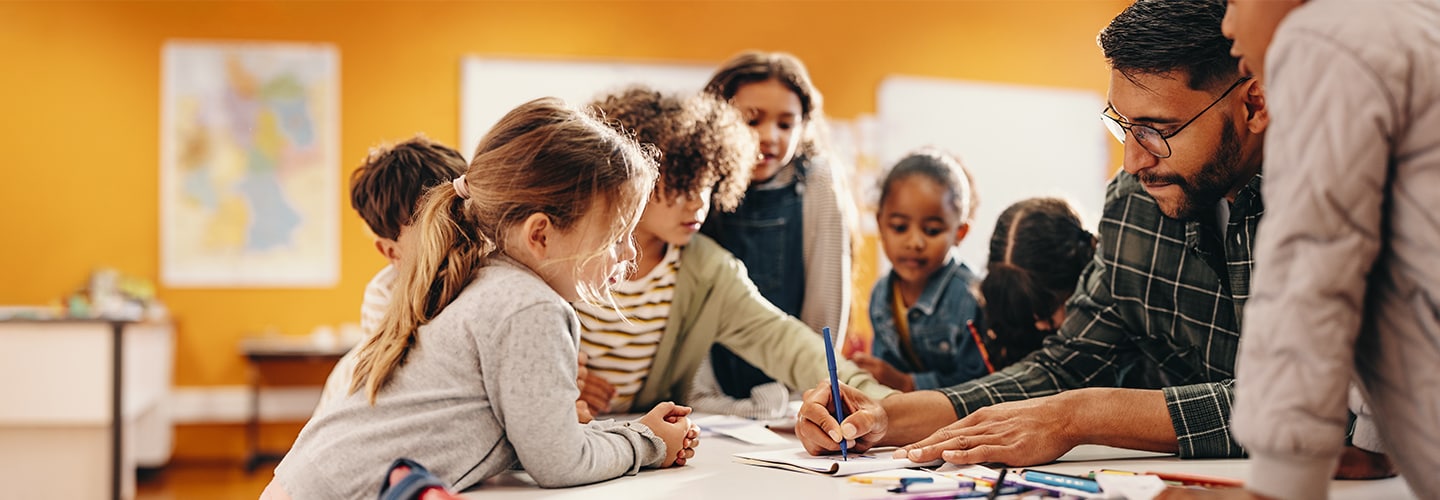
Romantic Readers and classroom ideas to celebrate Valentine’s day
Love is in the air on February 14th, with hearts, red roses and boxes of chocolates everywhere. We’re all set for the big day, and to help you prepare as well, here are six of our favorite love stories for learners of all ages and levels. There are also plenty of fun ideas for your classroom.
1. Cinderella (Level 1)
Poor Cinderella lives with her stepmother and two horrible stepsisters. They treat her badly, making her cook and clean, while they relax and wear beautiful clothes. However, one night, Cinderella gets the chance to sneak away and attend a fabulous ball. She meets a handsome prince…but must run away before he discovers her true identity. With only a glass shoe to help him, will the prince ever find Cinderella?
How to use this Reader in class:
It’s no surprise that the story has a happy ending. After reading the story, have the learners draw a picture and write about Cinderella’s new life in the castle, with her loving new family.
2. Lady and the Tramp (Level 3)
This classic Disney story tells the tale of two young dogs who come from different backgrounds. Lady lives in a house while Tramp lives on the street. However, one day, Lady is forced to leave the house and the life she knows. Tramp teaches her about life on the streets and the two dogs fall in love… but with the dog-catcher always chasing them, will the story have a happy ending?
How to use this reader in class:
After reading the story, why not watch the animated version with your students? They can choose their favorite character from the movie and write a description of them.
Looking for more romantic Readers for young learners? How about The Little Mermaid (Level 2) or Aladdin (Level 5)? There’s something for everyone in our catalog.
3. Pirates of the Caribbean: The Curse of the Black Pearl (Level 2)
If your teenagers are looking for more adventure than romance, this Reader has both. Follow crazy Jack Sparrow, handsome Will and brave Elizabeth as they fight pirates and uncover the curse of the Black Pearl. But will Elizabeth and Will survive the dangerous life on the seven seas?
How to use this Reader in class:
After reading the story, why not ask your students to write a review of it? It’s a great way for them to summarize the plot and share their opinion.
4. Pride and Prejudice (Level 5)
A timeless classic, Pride and Prejudice tells the story of young Elizabeth Bennett. As the oldest daughters in a family of five, she and her sister Jane are both expected to find good husbands and marry soon. But will Elizabeth find love, or will no man be good enough for her?
How to use this Reader in class:
While reading the story, learners can keep a diary, writing entries in the voice of Elizabeth Bennett. This helps them to demonstrate their understanding of the novel and encourages them to have a more empathetic reaction to the story’s heroine. They can either write the diary entries using typical language from Jane Austen’s day, or updating it to more modern language.
Here’s an example:
I had the ‘pleasure’ of meeting Mr Darcy today and found him rather rude and reserved. I imagine he feels this country life is inferior and that the locals are uncultured simpletons!
or
Met Mr Darcy today – what a stuck-up dork! He just stood there, looking down his nose at everyone… you can see he thinks he’s better than us locals.
If you think your teenage learners would enjoy a different modern or classic tale of romance, check out our readers here. There are plenty to choose from, including Romeo and Juliet (Level 3), Love Actually (Level 4) and Madame Bovary (Level 6).
5. Tales from the Arabian Nights (Level 2)
What would you do if you needed to fascinate a king to save your life? This is the problem Sheherezade faces when she marries a king who has killed all his previous wives. So she tells her new husband exciting, mesmerizing stories every night and always ends the tale with the king wanting to hear more. She tells him stories of adventure, love and mystery… and you can read her stories too in this Level 2 Reader.
How to use this reader in class:
After reading the book, have students vote on their favorite story from Sheherezade. They can then work in groups to present a short play of one of the stories, working together to write a short script.
6. Wuthering Heights (Level 5)
Unfortunately, the path of true love isn’t always easy. Set in 19th Century Yorkshire, this tragic romance follows the story of Catherine and Heathcliff. The two childhood friends grow up together very closely. However, although she loves him deeply, Catherine can’t marry Heathcliff because of his lower social status. Instead, she marries another man, Edgar. How will Heathcliff react to this news? Will Catherine and Edgar be happy together?
How to use this reader in class:
At one point in Wuthering Heights, Heathcliff runs away from home because he thinks Catherine is embarrassed by him and doesn’t love him. Have the learners write a letter from Catherine to Heathcliff at that point, expressing her regrets about why they can’t be together. It provides students with the opportunity to use phrases such as If only…, I wish… and I should have… whilst demonstrating their understanding of the novel so far.
If Yorkshire moors and Arabian nights aren’t quite what your students are looking for, there are more tales of romance on our site. Choose from modern-day love stories such as Notting Hill (Level 3) and Lisa in London (Level 1) or classics like Anna Karenina (Level 6) and Persuasion (Level 2).
If you enjoyed this post here are some more practical posts to get your students engaged in reading, 'How to bring Shakespeare to life in the classroom' and 'How to motivate reluctant readers'.















